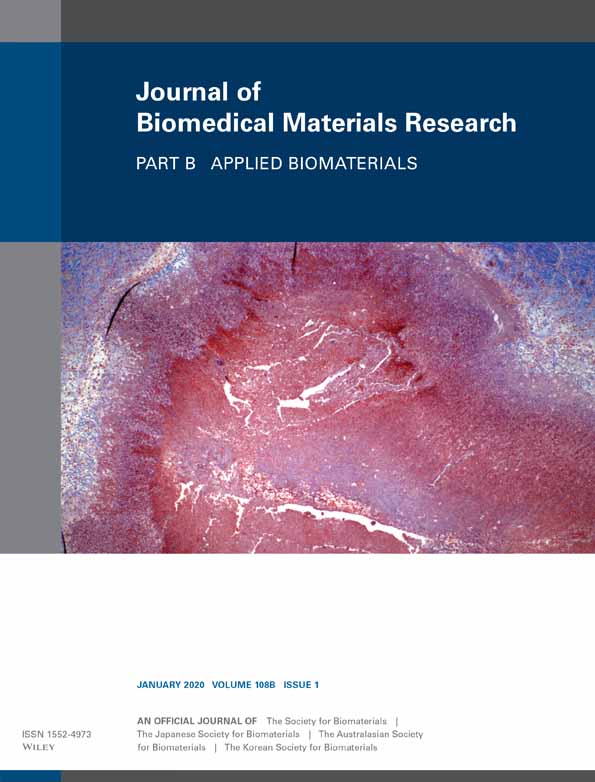Effects of acidic calcium phosphate concentration on setting reaction and tissue response to β-tricalcium phosphate granular cement
Abstract
Beta-tricalcium phosphate granular cement (β-TCP GC), consisting of β-TCP granules and an acidic calcium phosphate (Ca-P) solution, shows promise in the reconstruction of bone defects as it sets to form interconnected porous structures, that is, β-TCP granules are bridged with dicalcium phosphate dihydrate (DCPD) crystals. In this study, the effects of acidic Ca-P solution concentration (0–600 mmol/L) on the setting reaction and tissue response to β-TCP GC were investigated. The β-TCP GC set upon mixing with its liquid phase, based on the formation of DCPD crystals, which bridged β-TCP granules to one another. Diametral tensile strength of the set β-TCP GC was relatively the same, at ∼0.6 MPa, when the Ca-P concentration was 20–600 mmol/L. Due to the setting ability, reconstruction of the rat's calvarial bone defect using β-TCP GC with 20, 200, and 600 mmol/L Ca-P solution was much easier compared to that with β-TCP granules without setting ability. Four weeks after the reconstruction, the amount of new bone was the same, ∼17% in both β-TCP GC and β-TCP granules groups. Cellular response to β-TCP granules and β-TCP GC using the 20 mmol/L acidic Ca-P solution was almost the same. However, β-TCP GC using the 200 and 600 mmol/L acidic Ca-P solution showed a more severe inflammatory reaction. It is concluded, therefore, that β-TCP GC, using the 20 mmol/L acidic Ca-P solution, is recommended as this concentration allows surgical techniques to be performed easily and provides good mechanical strength, and the similar cellular response to β-TCP granules. © 2019 Wiley Periodicals, Inc. J Biomed Mater Res Part B: Appl Biomater 108B:22–29, 2020.




